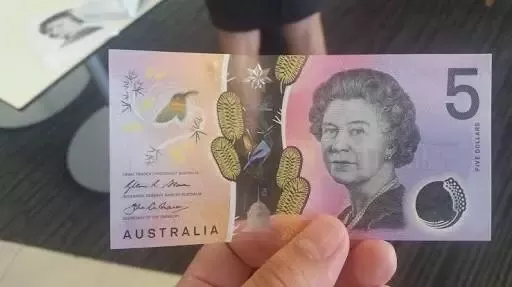Counterfeit money is a significant problem that affects economies worldwide, leading to financial losses for businesses and individuals alike. As counterfeiters become more sophisticated in their methods, it is increasingly important to understand how to identify fake bills and take steps to protect yourself from falling victim to this crime.
Whether you’re a business owner, cashier, or consumer, knowing how to use a bill checker to spot counterfeit money can save you from financial losses and legal complications. In this article, we’ll explore what counterfeit money is, how to identify it, and practical ways to protect yourself.
Table of Contents
What Is Counterfeit Money?
Counterfeit money is currency produced without the authorization of the government. It is designed to look like genuine currency with the intent to deceive and circulate as real money. This practice is illegal and considered a serious crime in most countries.
Counterfeit money can have significant negative impacts on the economy. It can contribute to inflation, cause financial losses for businesses and individuals who unknowingly accept fake bills, and undermine trust in the financial system.
Counterfeiters use various methods to create fake money, including digital printing, offset printing, and even handcrafted techniques. To make it difficult to replicate, governments combat counterfeiting by incorporating security features into currency, such as watermarks, holograms, and microprinting. However, despite all these, counterfeit money is still a thorn in the flesh.
How to Identify Counterfeit Money?
There are several ways to identify counterfeit money, including:
1. Check for Watermarks
One of the most reliable ways to identify counterfeit money is by checking for watermarks. Genuine bills have watermarks that can be seen when held up to the light. The watermark must match the portrait on the bill. For example, if you’re holding a $100 bill, the watermark should be of Benjamin Franklin, not any other figure. The bill is likely counterfeit if the watermark is absent or does not match the portrait?.
2. Examine the Security Thread
Another key security feature is the thread, a thin embedded strip vertically running through the bill. When held up to the light, this thread should be visible, and it usually contains the bill’s denomination in text. Additionally, when placed under ultraviolet (UV) light, the security thread glows a specific color, which varies depending on the bill’s denomination. For instance, a $20 bill will glow green, while a $100 bill will glow pink.
3. Look for Color-Shifting Ink
Modern bills, especially those printed after 2006, often feature color-shifting ink. This is most easily observed on the bill’s lower right-hand corner, where the denomination’s numeral is printed. When you tilt the bill back and forth, the color of this numeral should shift, typically from copper to green. This feature is difficult for counterfeiters to replicate, making it a reliable indicator of authenticity.
4. Feel for Raised Printing
Genuine U.S. currency is printed using a process called intaglio printing, which results in raised ink that can be felt by touch. Key elements of the bill, such as the portrait or the denomination, should feel slightly rough to the touch. If the bill feels smooth or flat, it could be a counterfeit. This raised texture is particularly evident in the portrait’s fine details and around the bill’s borders?.
5. Inspect Microprinting
Microprinting is a security feature that involves tiny, detailed text that is difficult for counterfeiters to replicate. Microprinting can be found on genuine bills in various locations, such as around the portrait or on the security thread. This text is usually so small that it requires a magnifying glass to read. If you cannot locate the microprinting or if the text appears blurry, the bill may be counterfeit?
How to Protect Yourself from Counterfeit Money?
Even though it’s not easy to completely avoid counterfeit money, you can take several proactive steps to protect yourself from becoming a victim. By staying vigilant and following these best practices, you can significantly reduce the risk of accepting fake currency.
1. Educate Yourself on Currency Security Features
Understanding the security features of genuine currency is crucial. Familiarize yourself with the watermark, security thread, color-shifting ink, and microprinting commonly found on legitimate bills. Knowing what to look for lets you quickly spot inconsistencies in fake money. Regularly refreshing your knowledge as new designs and features are introduced will keep you one step ahead of counterfeiters?.
2. Use Bill Checkers
Investing in reliable bill checkers is a practical step, especially for businesses that handle large amounts of cash. These devices verify the authenticity of currency by scanning for security features such as UV markings, magnetic ink, and microprinting. They can quickly identify fake notes and help you avoid losses and legal complications?.
3. Only Accept Cash from Trusted Sources
Whenever possible, get cash from reputable sources like banks or ATMs. These institutions have measures to verify the authenticity of the currency they dispense. Avoid accepting large bills from unknown individuals or in situations where the authenticity of the money cannot be immediately verified?.
4. Be Cautious During High-Risk Transactions
Transactions that involve large sums of money, such as the sale of high-value items, are particularly vulnerable to counterfeit currency. During these exchanges, take extra precautions, such as verifying bills individually or requesting a different form of payment. If something seems suspicious, don’t hesitate to refuse the transaction.
5. Report Suspected Counterfeit Bills Immediately
If you suspect you have received a counterfeit bill, report it to local authorities as soon as possible. Handle the bill as little as possible to preserve any forensic evidence. Reporting counterfeit currency helps prevent further circulation and contributes to broader efforts to combat counterfeiting.
Final Thoughts
As counterfeiters become increasingly sophisticated, protecting yourself from fake currency becomes more crucial. You can effectively safeguard your finances by staying informed, utilizing the right tools, and exercising caution in all cash transactions. Awareness and vigilance are your best defenses. They can help you to confidently handle currency and avoid the pitfalls of counterfeit bills.
